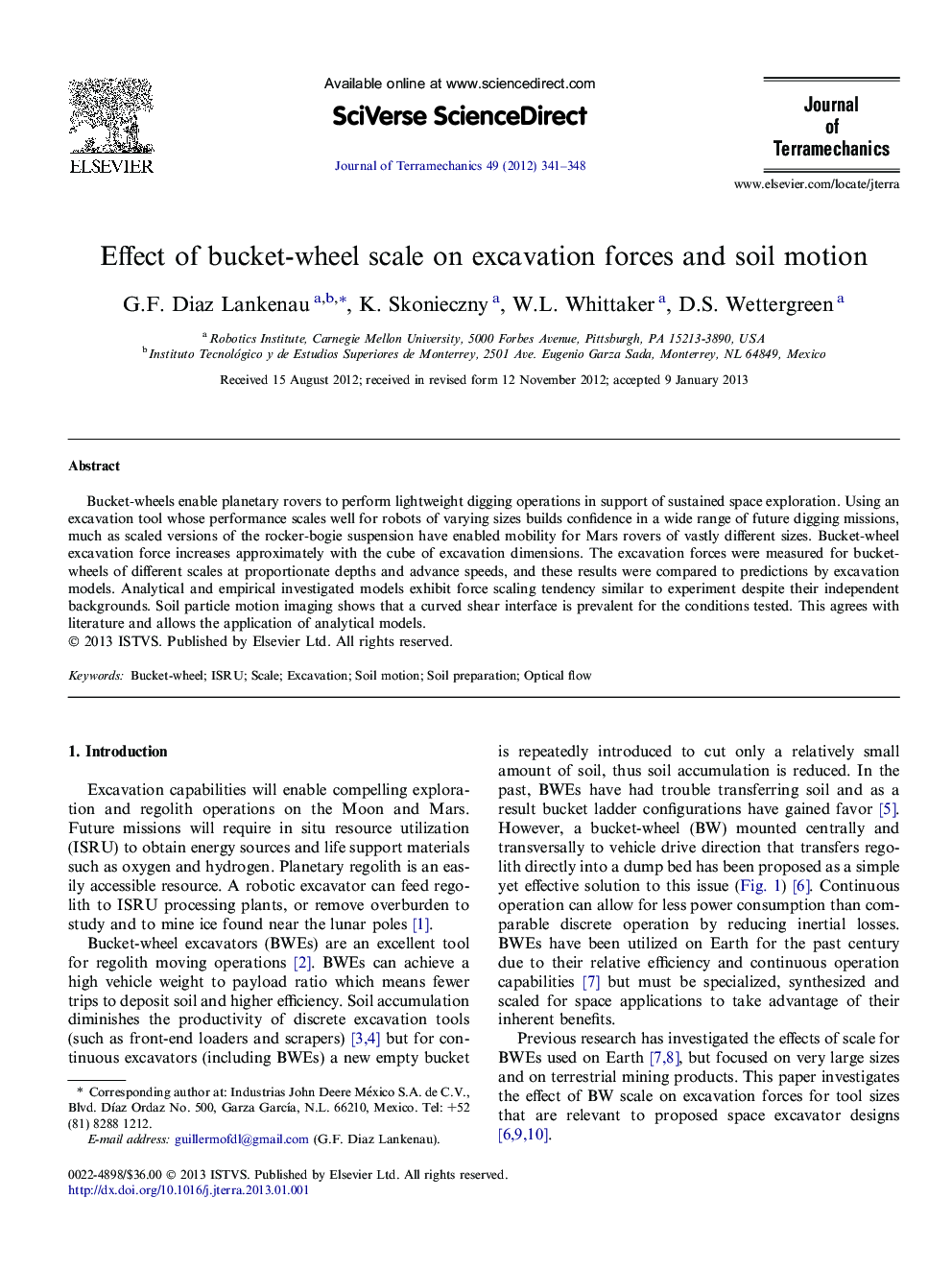| Article ID | Journal | Published Year | Pages | File Type |
|---|---|---|---|---|
| 796715 | Journal of Terramechanics | 2012 | 8 Pages |
Bucket-wheels enable planetary rovers to perform lightweight digging operations in support of sustained space exploration. Using an excavation tool whose performance scales well for robots of varying sizes builds confidence in a wide range of future digging missions, much as scaled versions of the rocker-bogie suspension have enabled mobility for Mars rovers of vastly different sizes. Bucket-wheel excavation force increases approximately with the cube of excavation dimensions. The excavation forces were measured for bucket-wheels of different scales at proportionate depths and advance speeds, and these results were compared to predictions by excavation models. Analytical and empirical investigated models exhibit force scaling tendency similar to experiment despite their independent backgrounds. Soil particle motion imaging shows that a curved shear interface is prevalent for the conditions tested. This agrees with literature and allows the application of analytical models.
► For small bucket-wheels, excavation force scales near cubically with dimensions. ► Two common excavation models predict similar force scaling to experimental results. ► Soil particle motion imaging identifies shear as the prominent soil failure mode.
